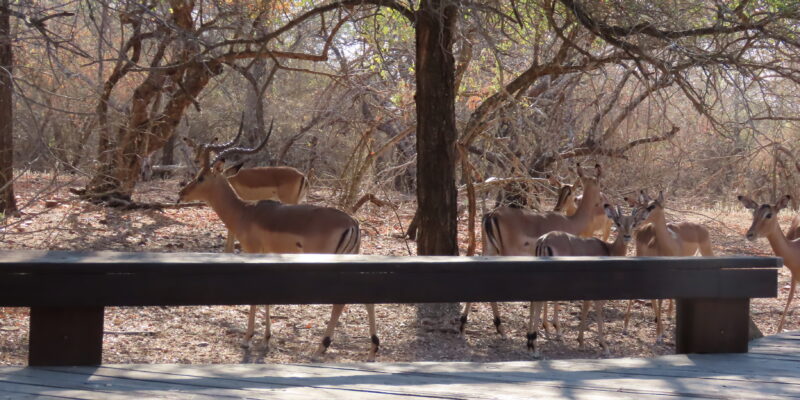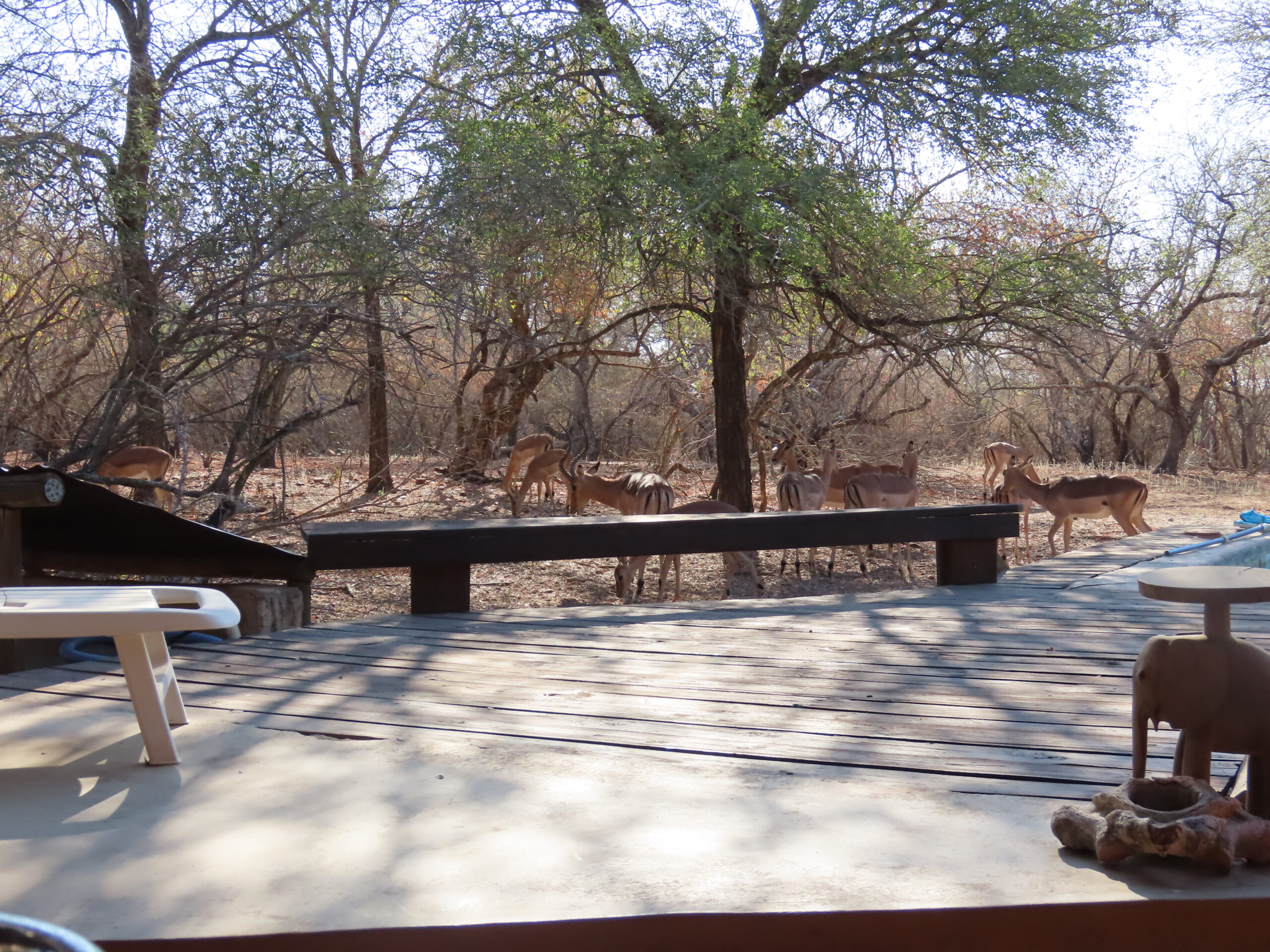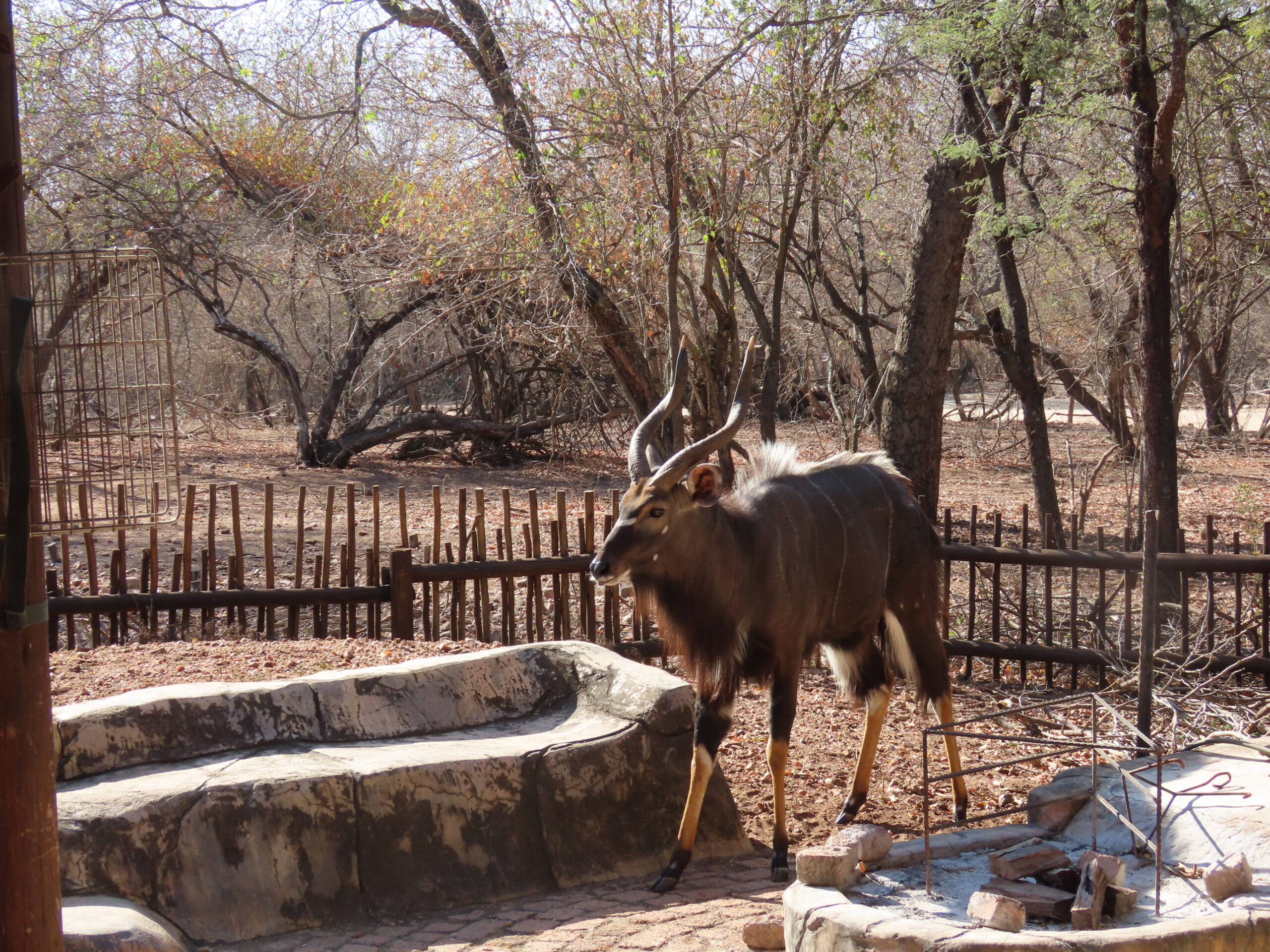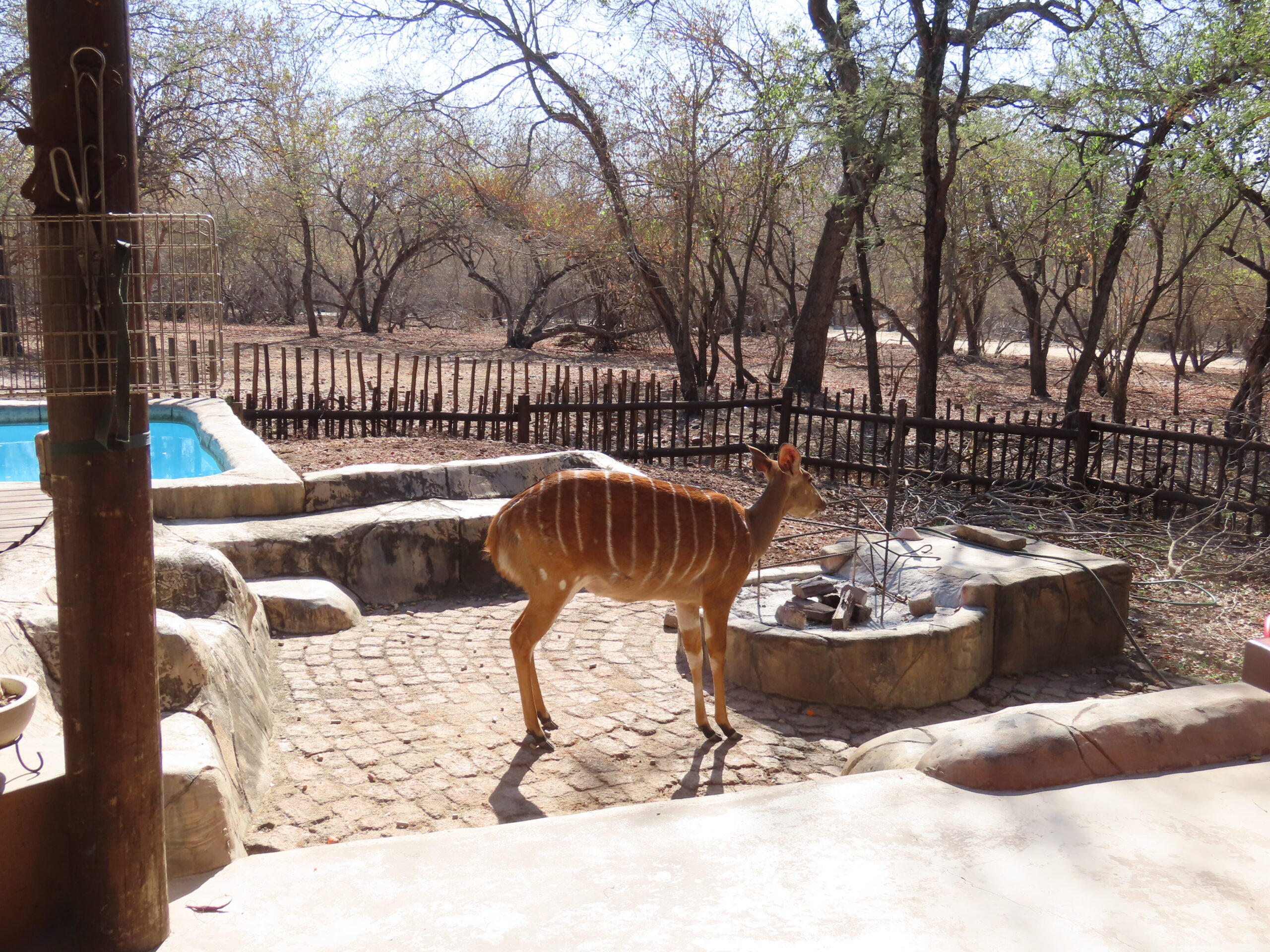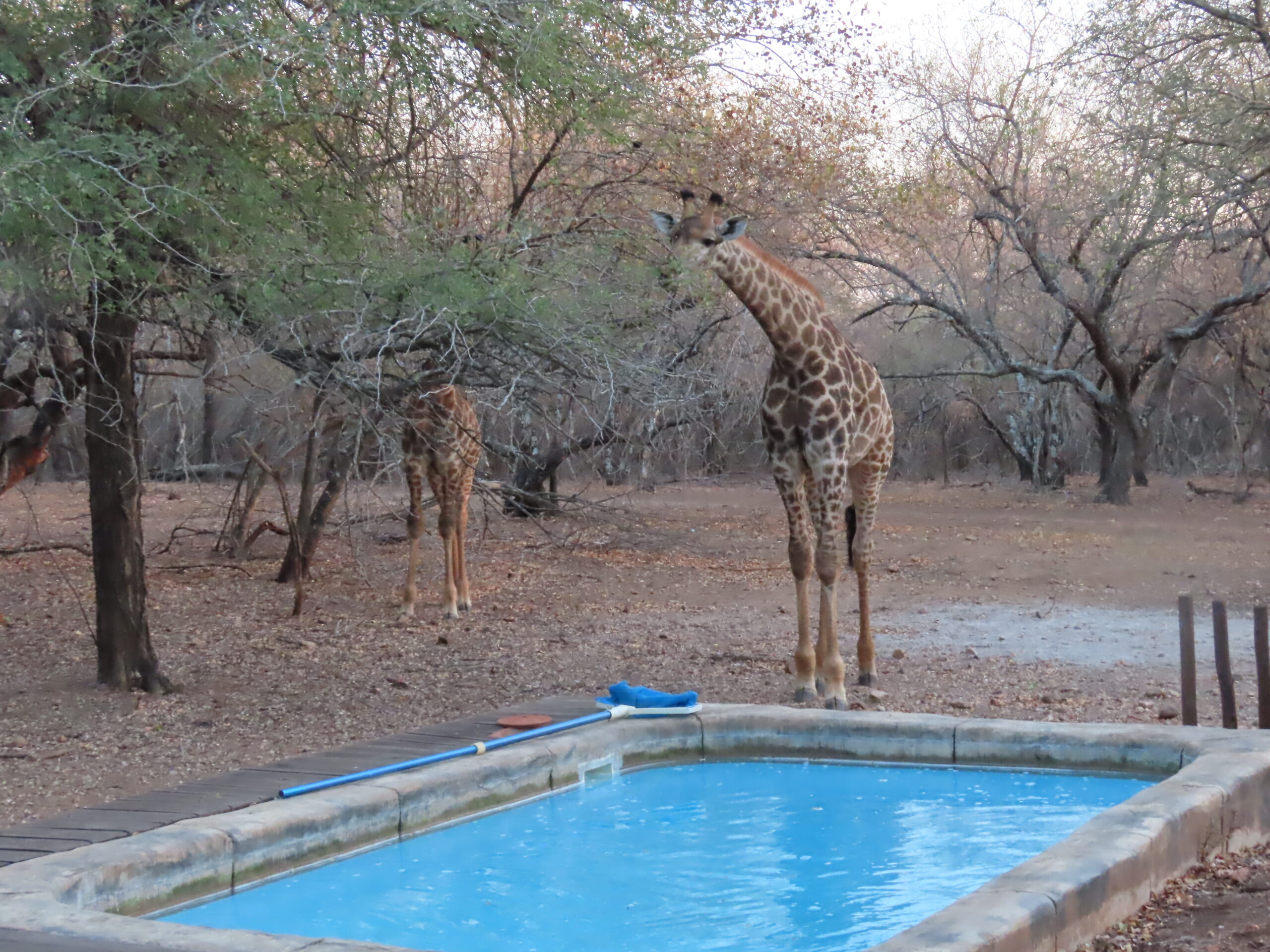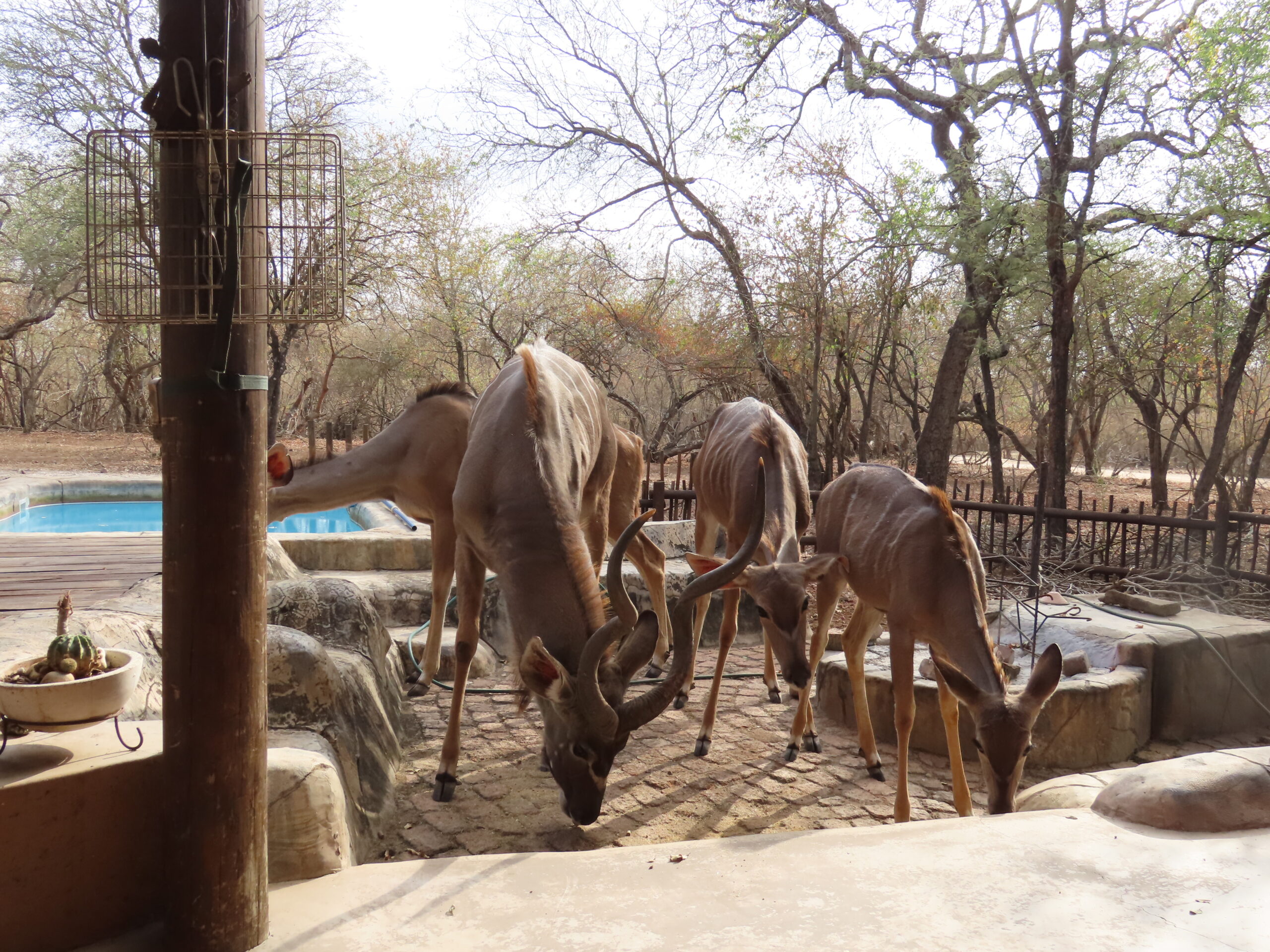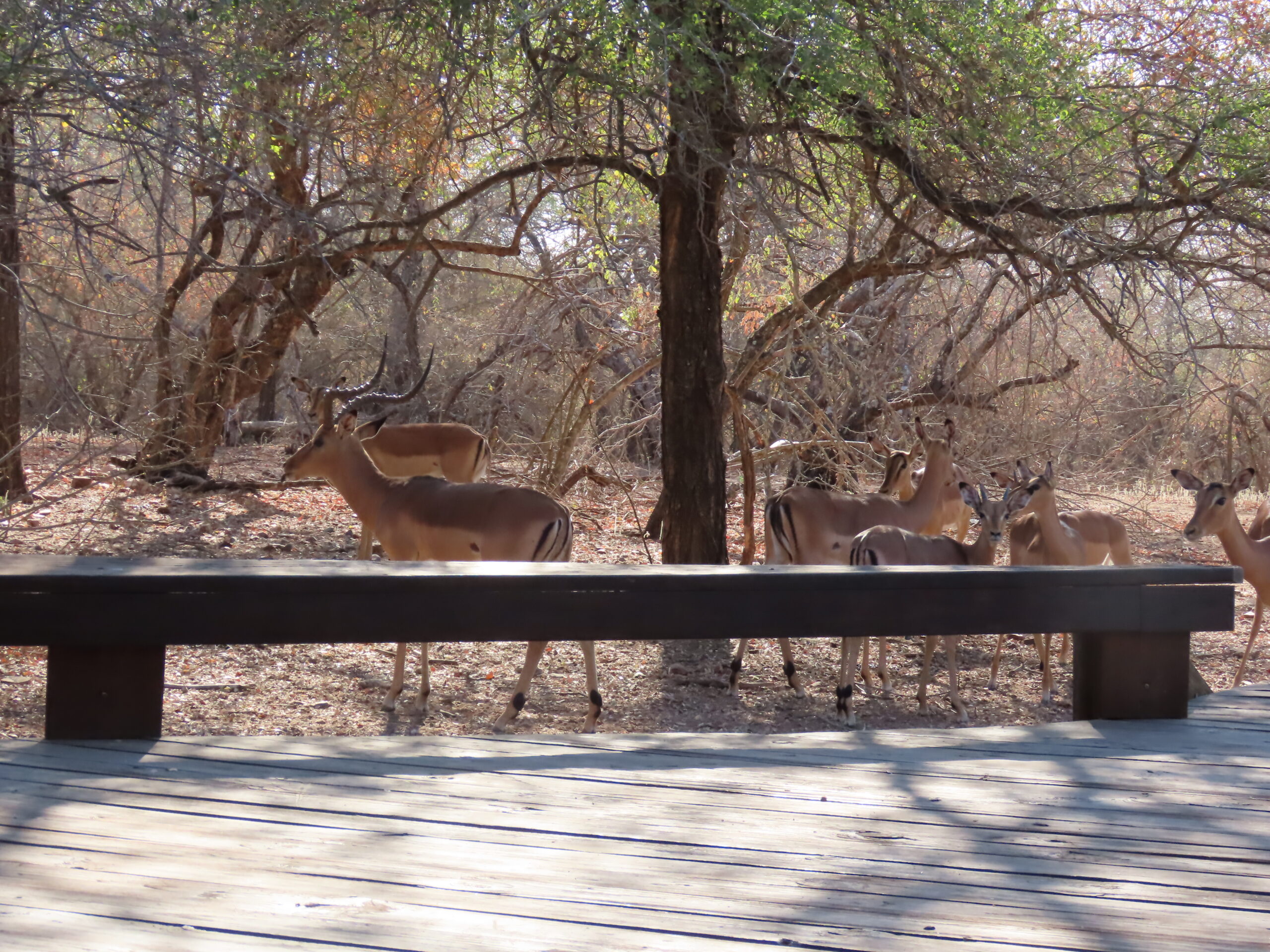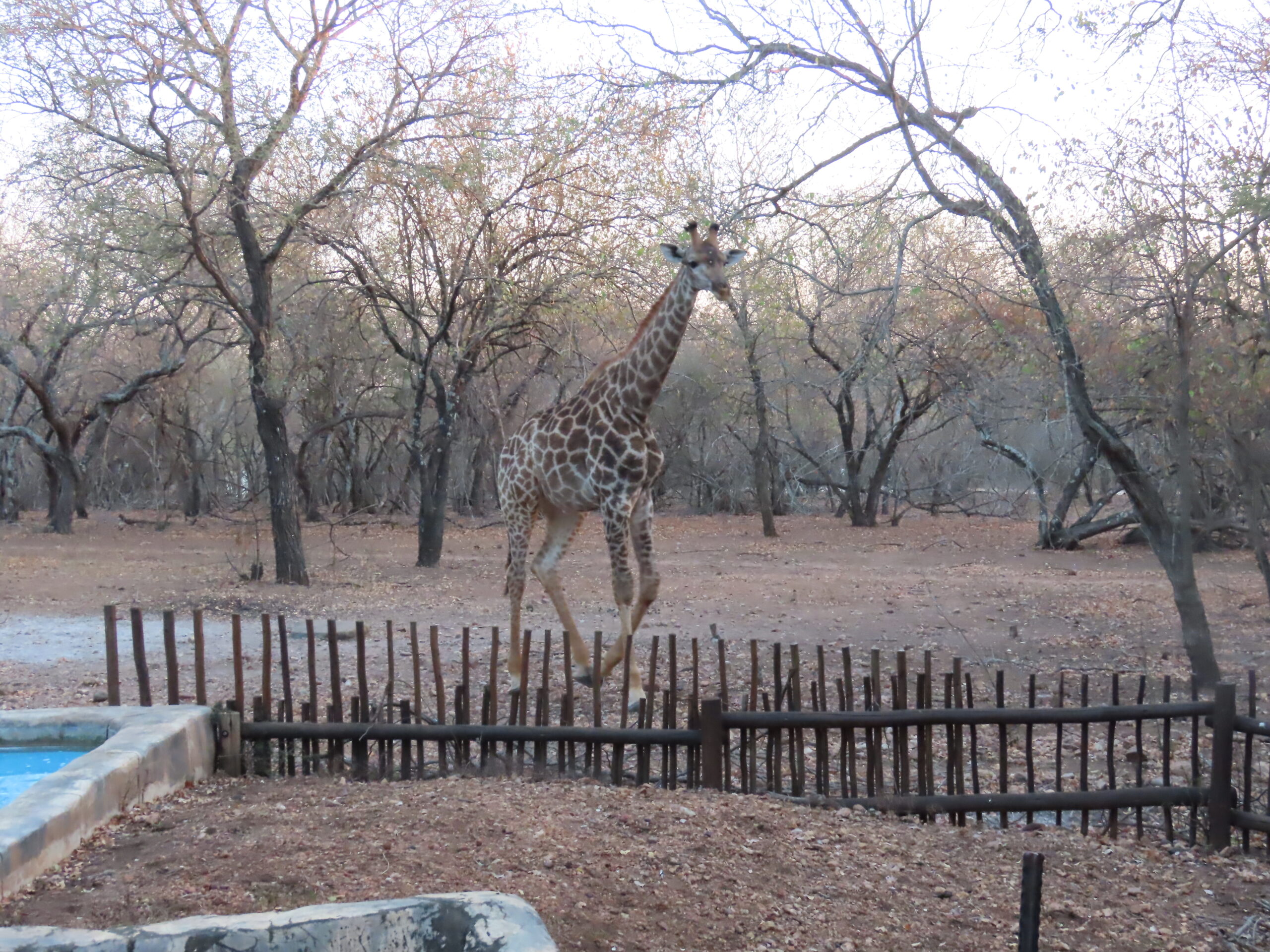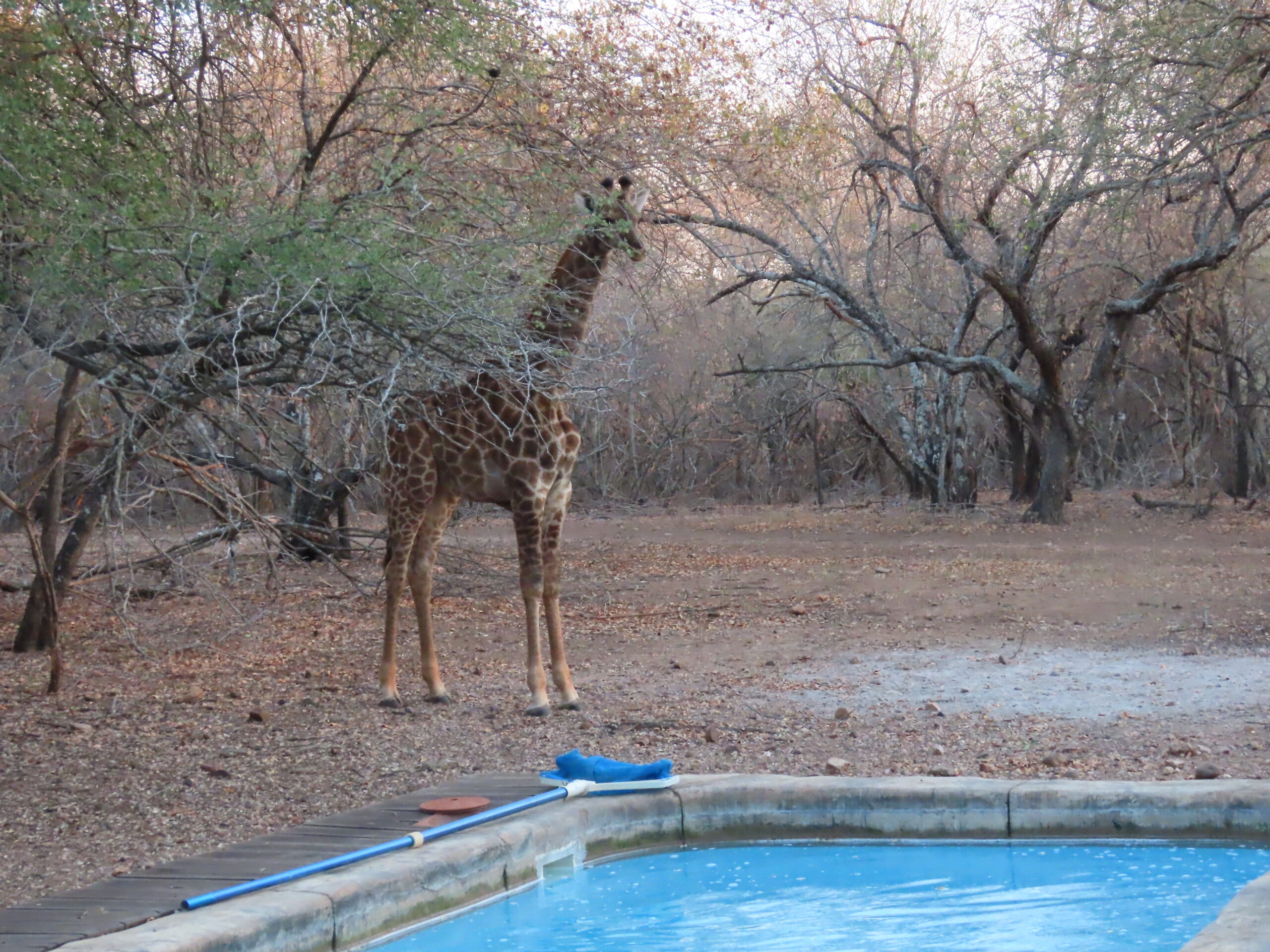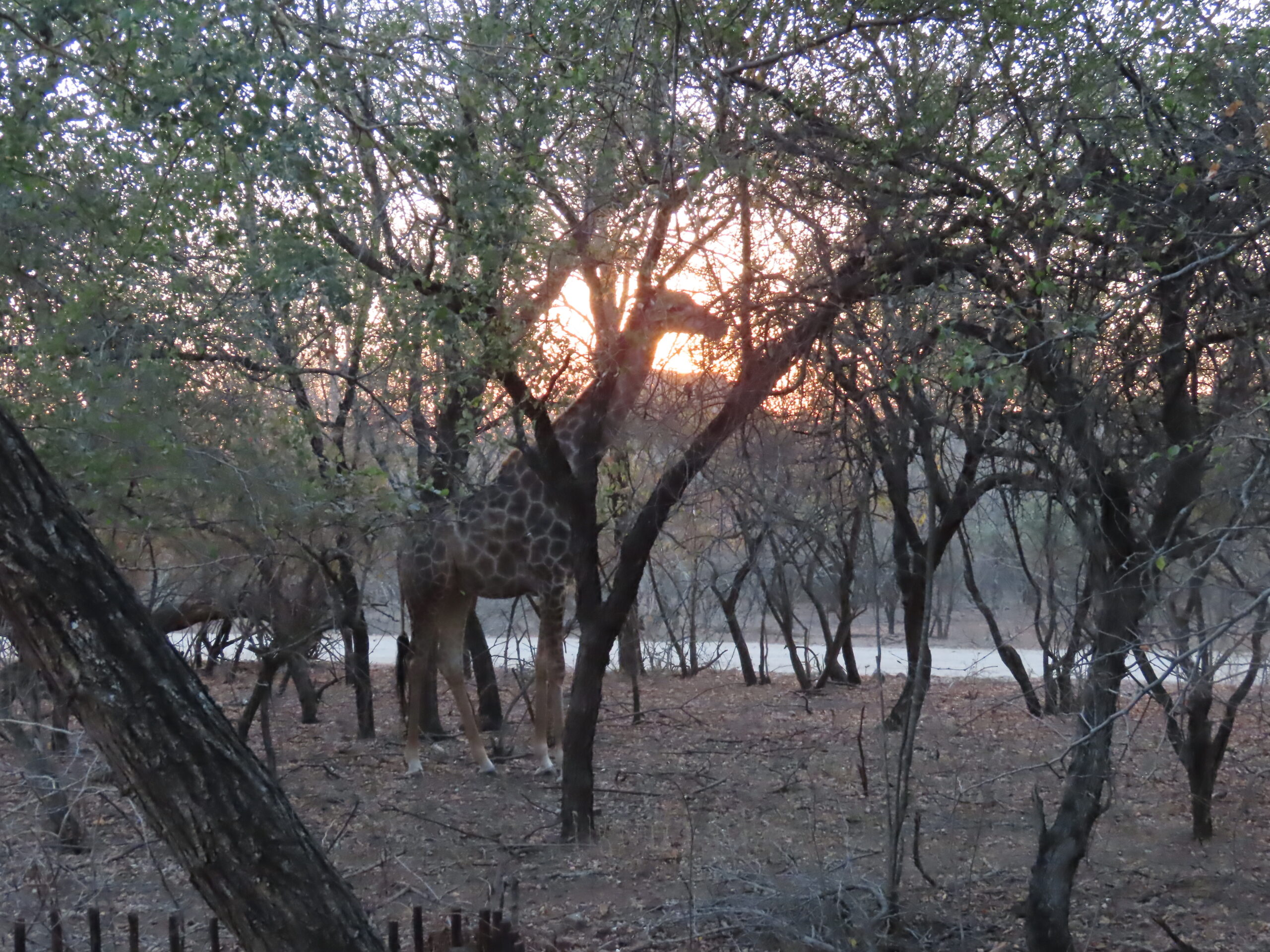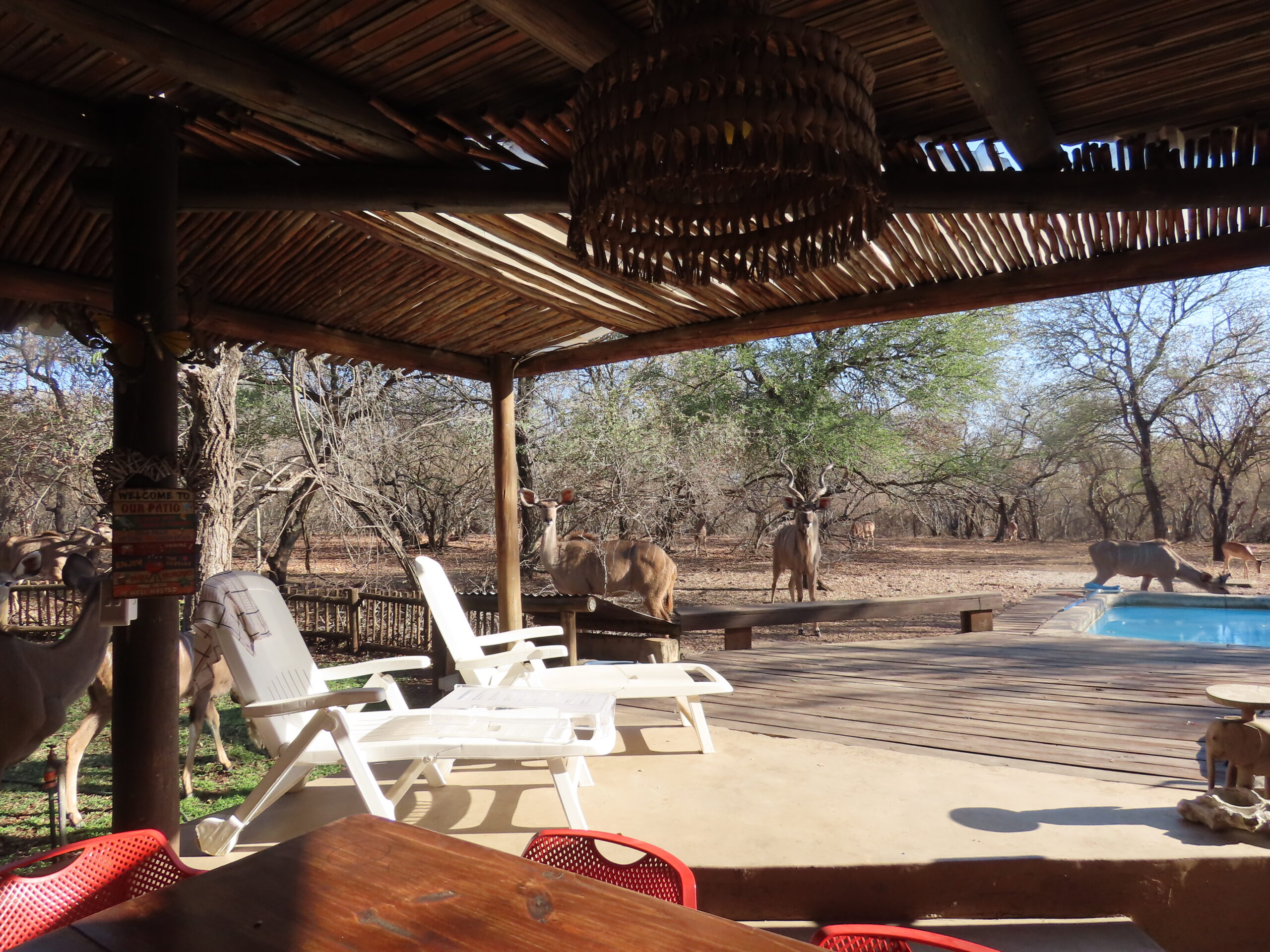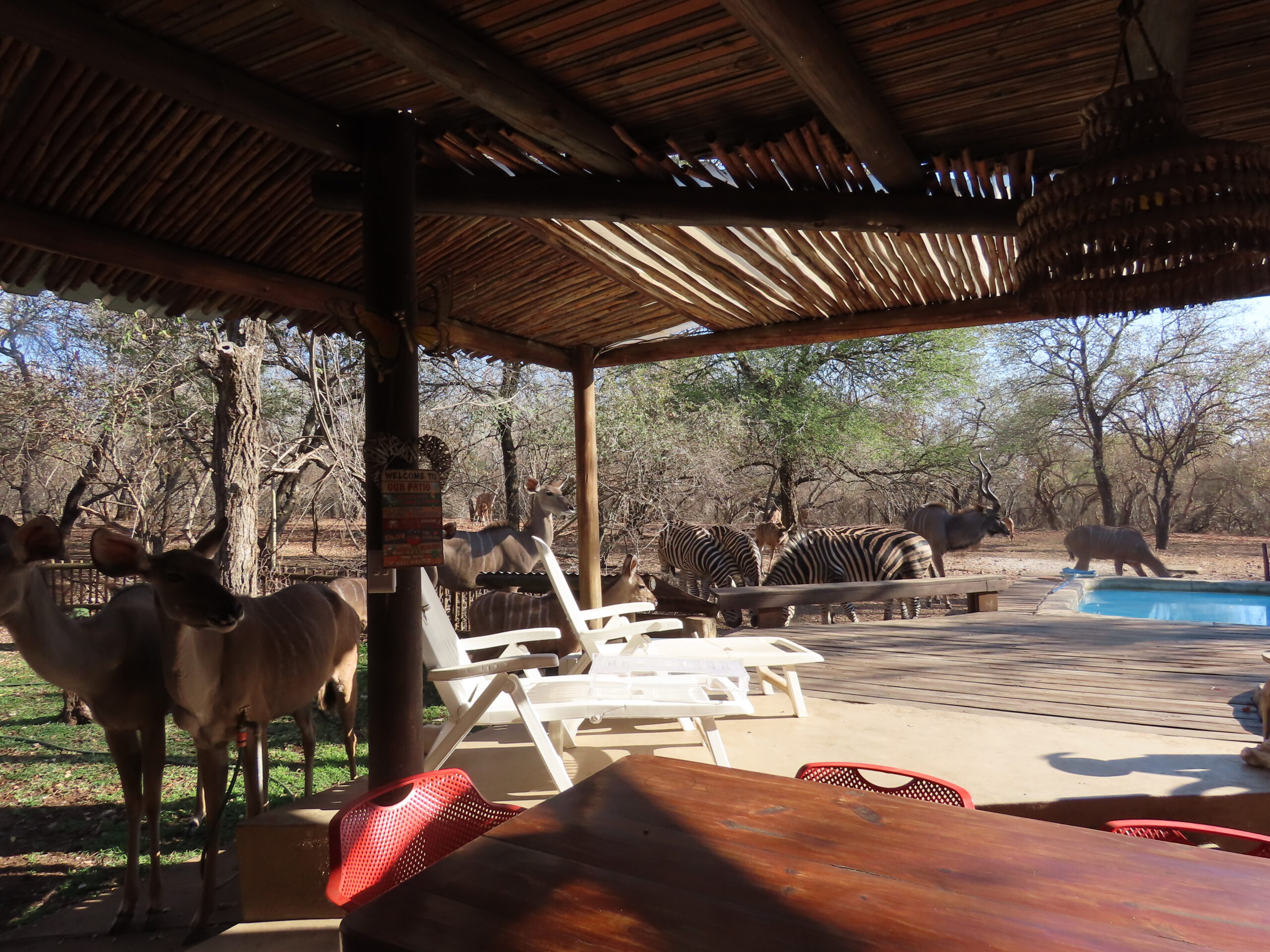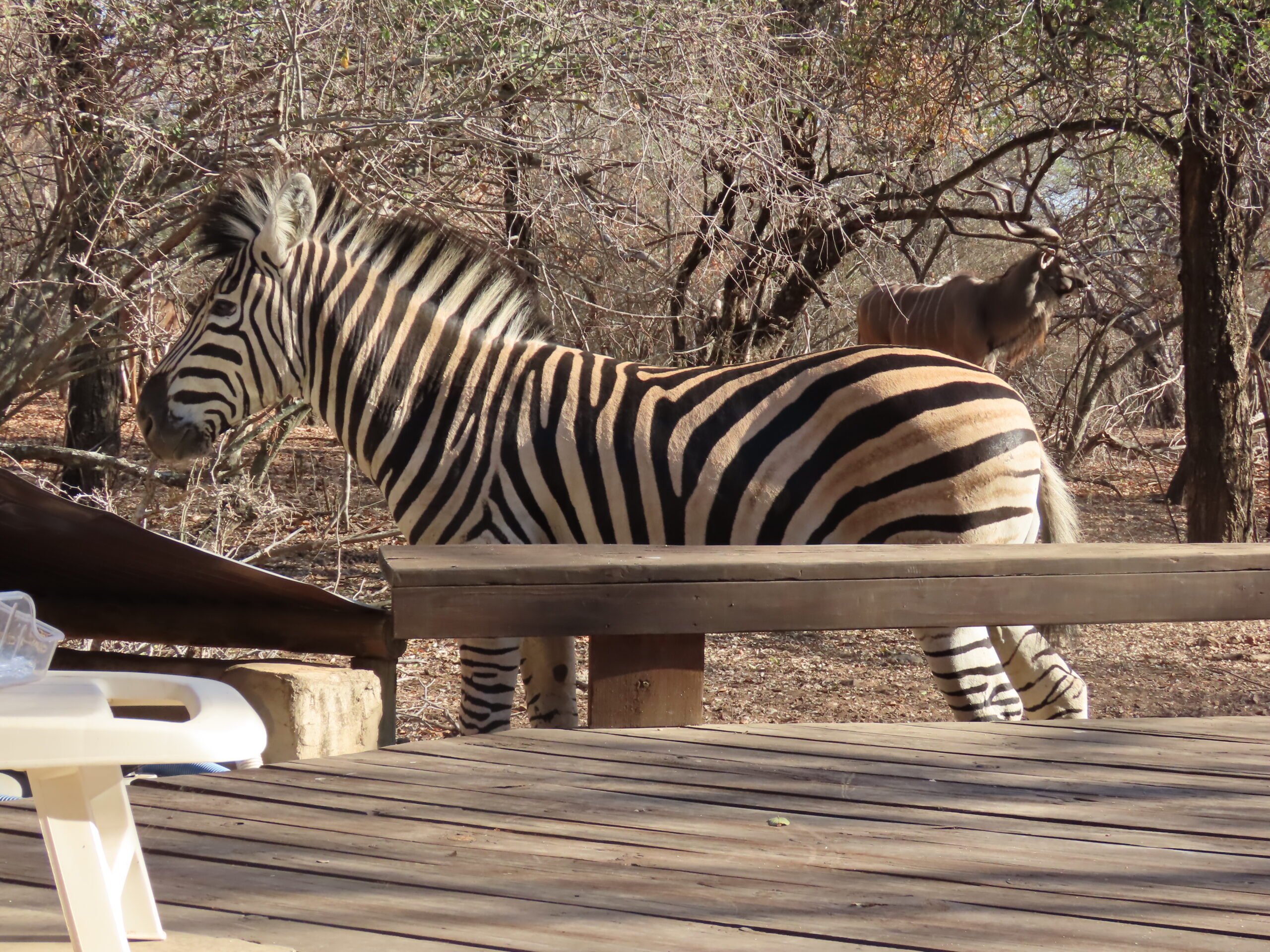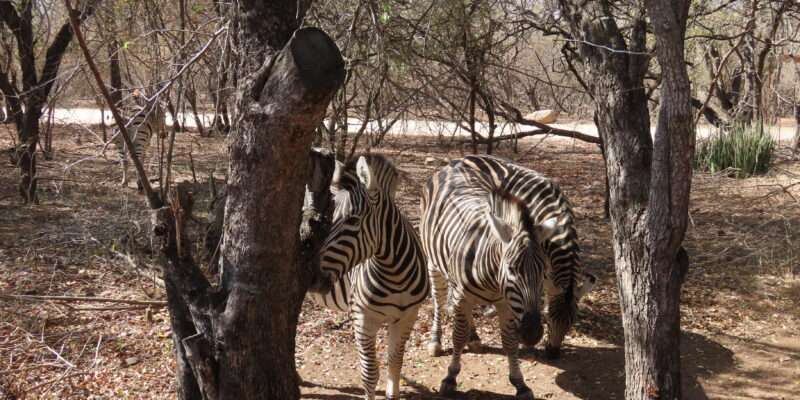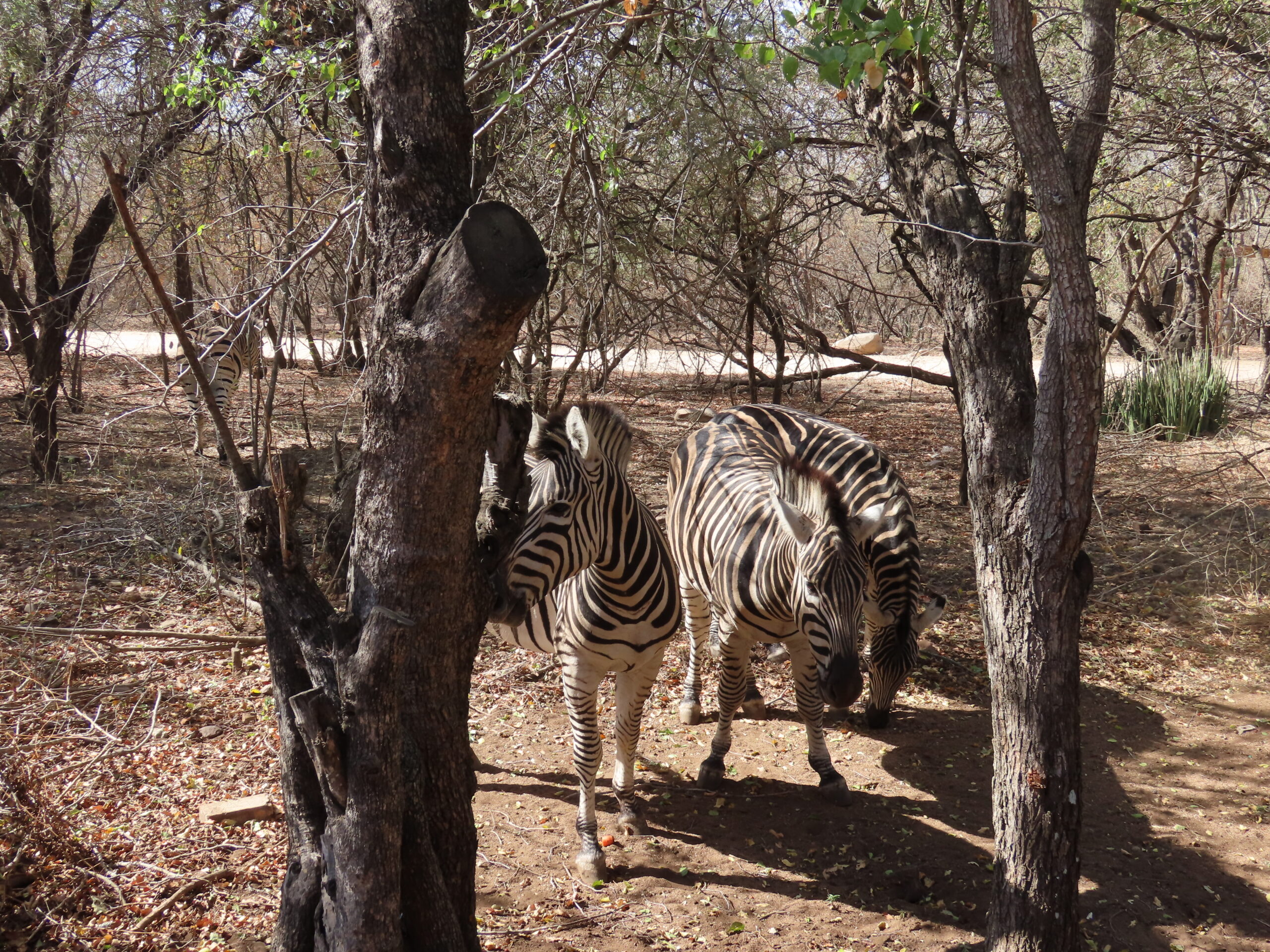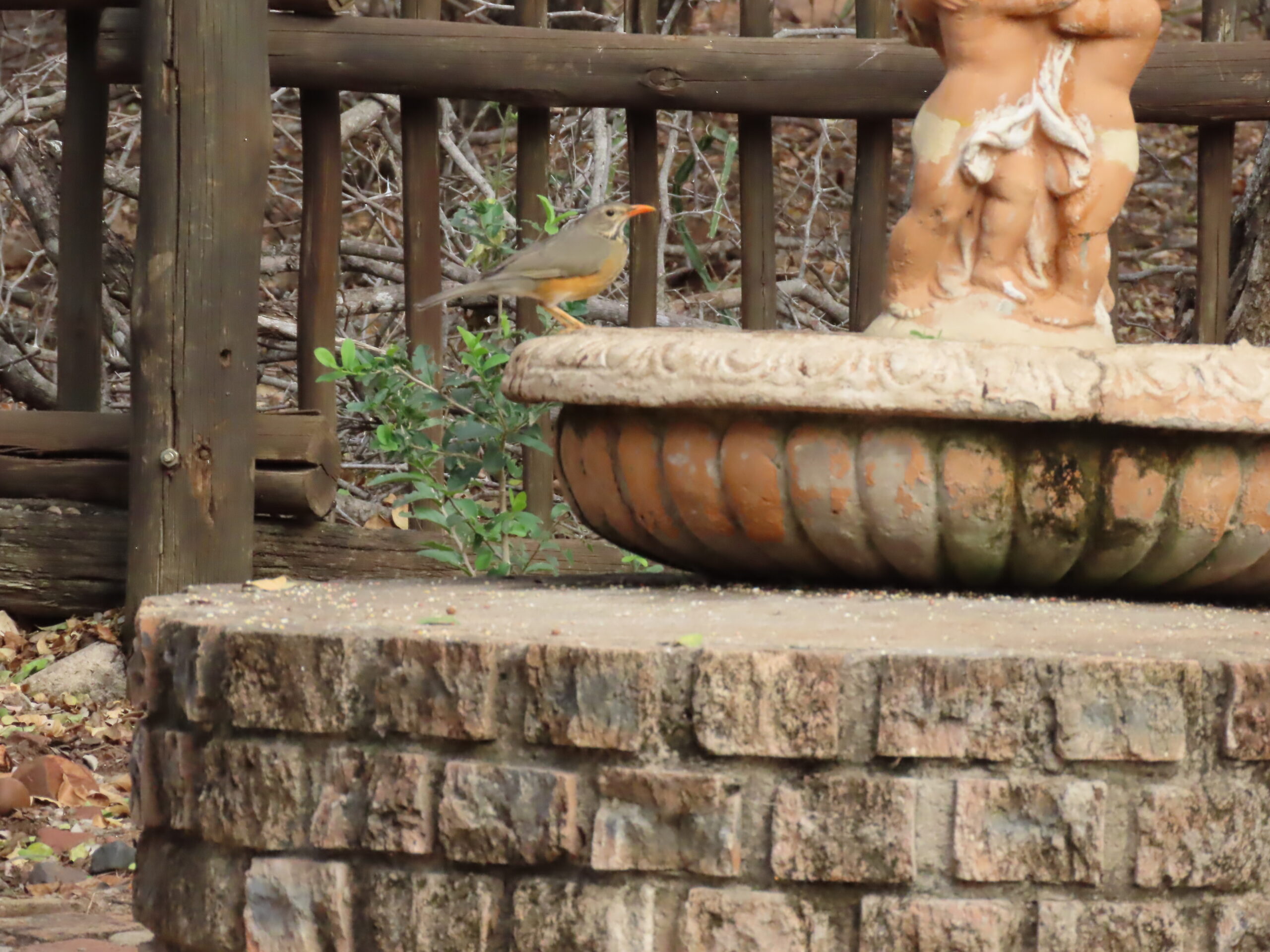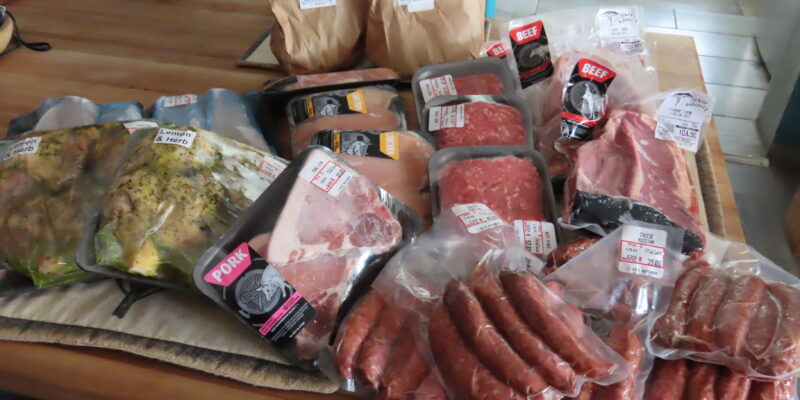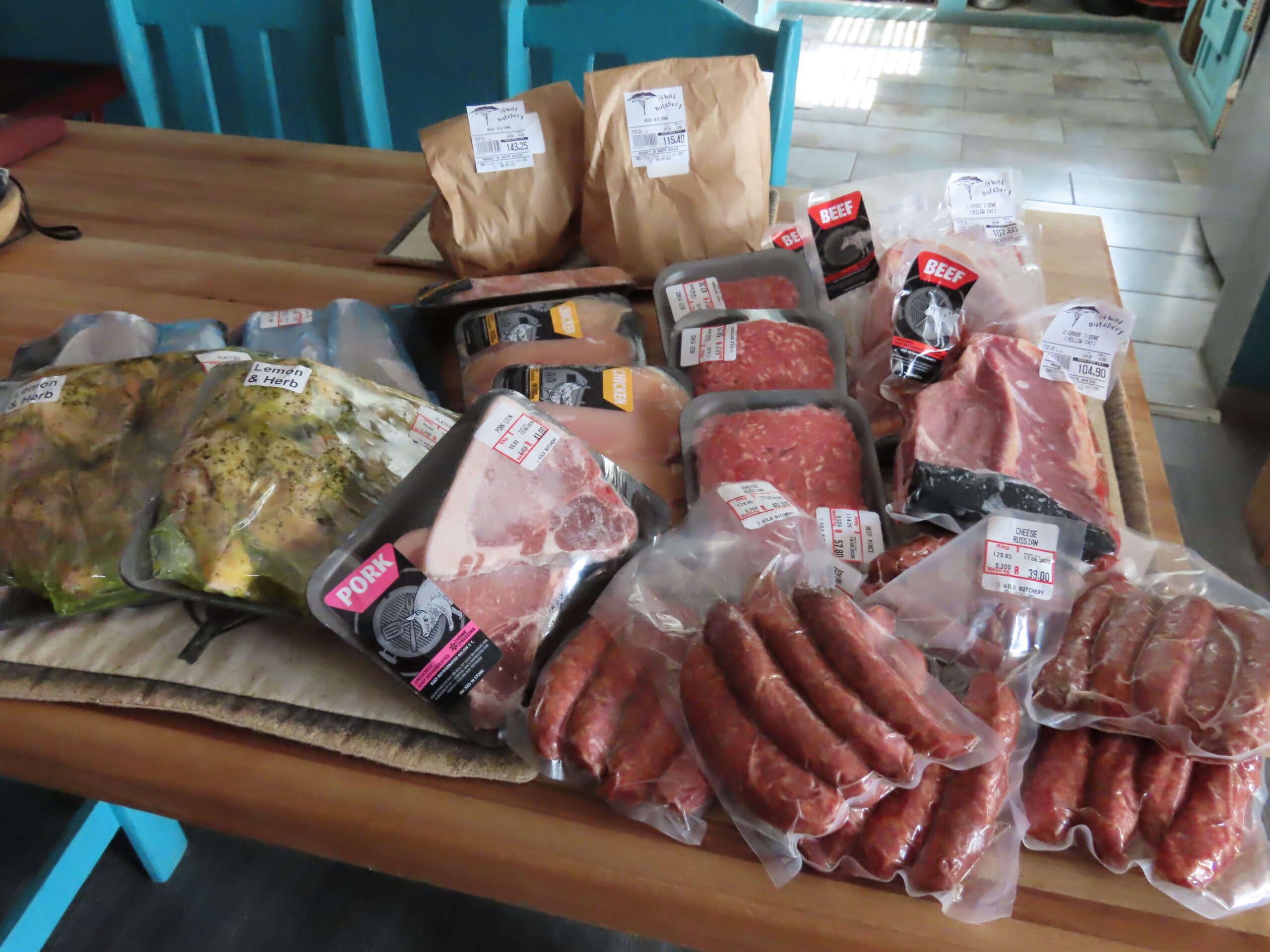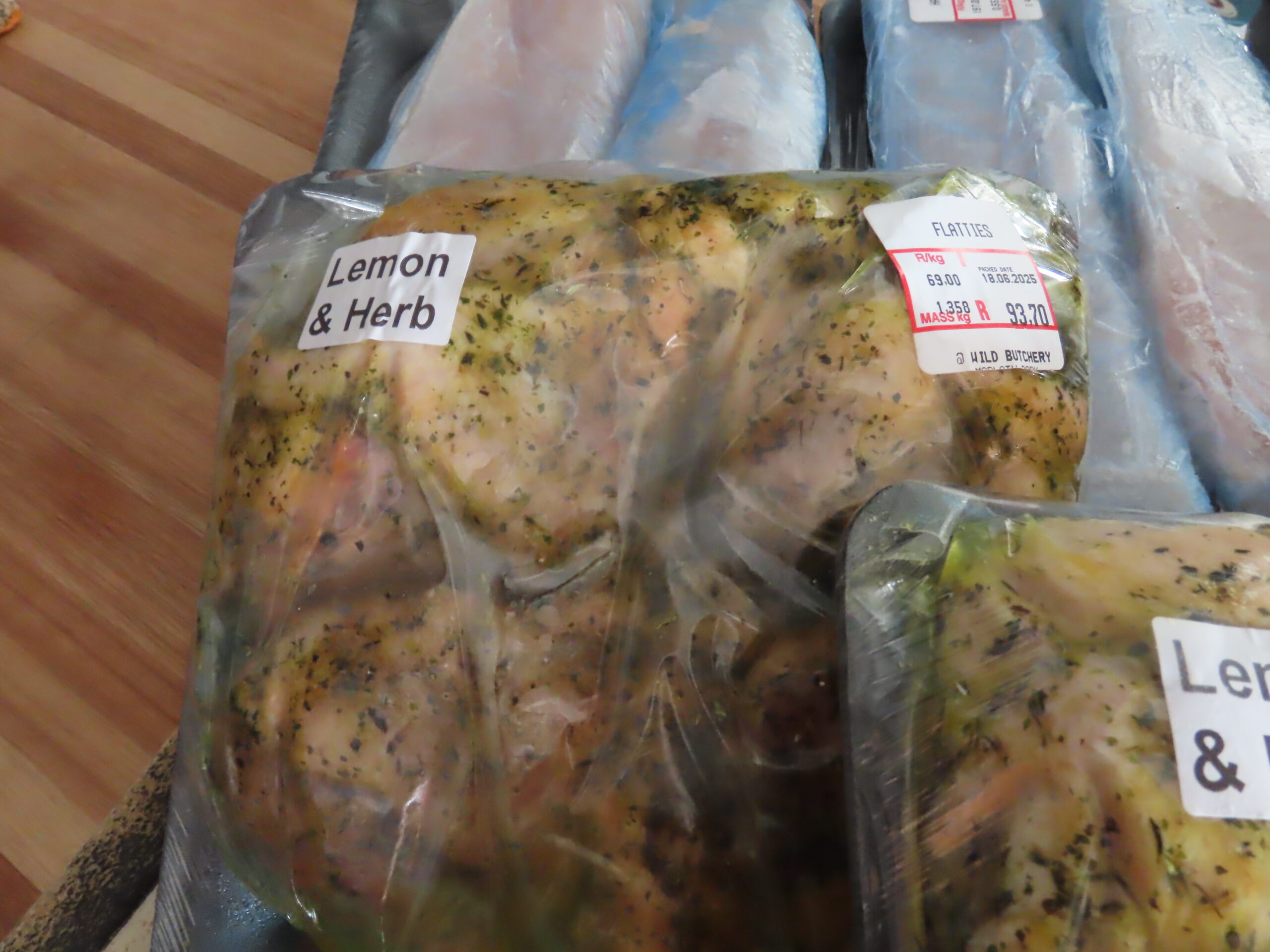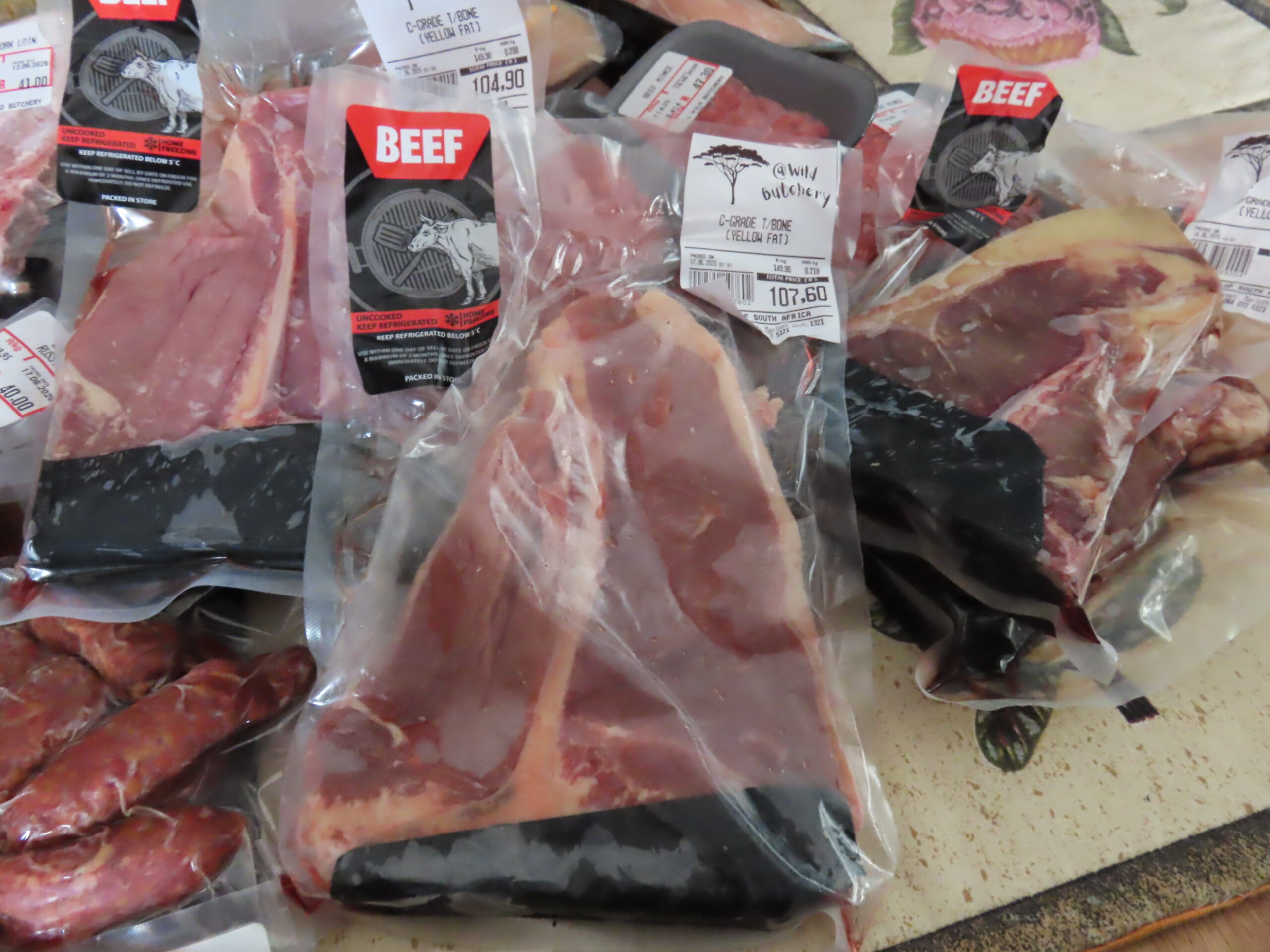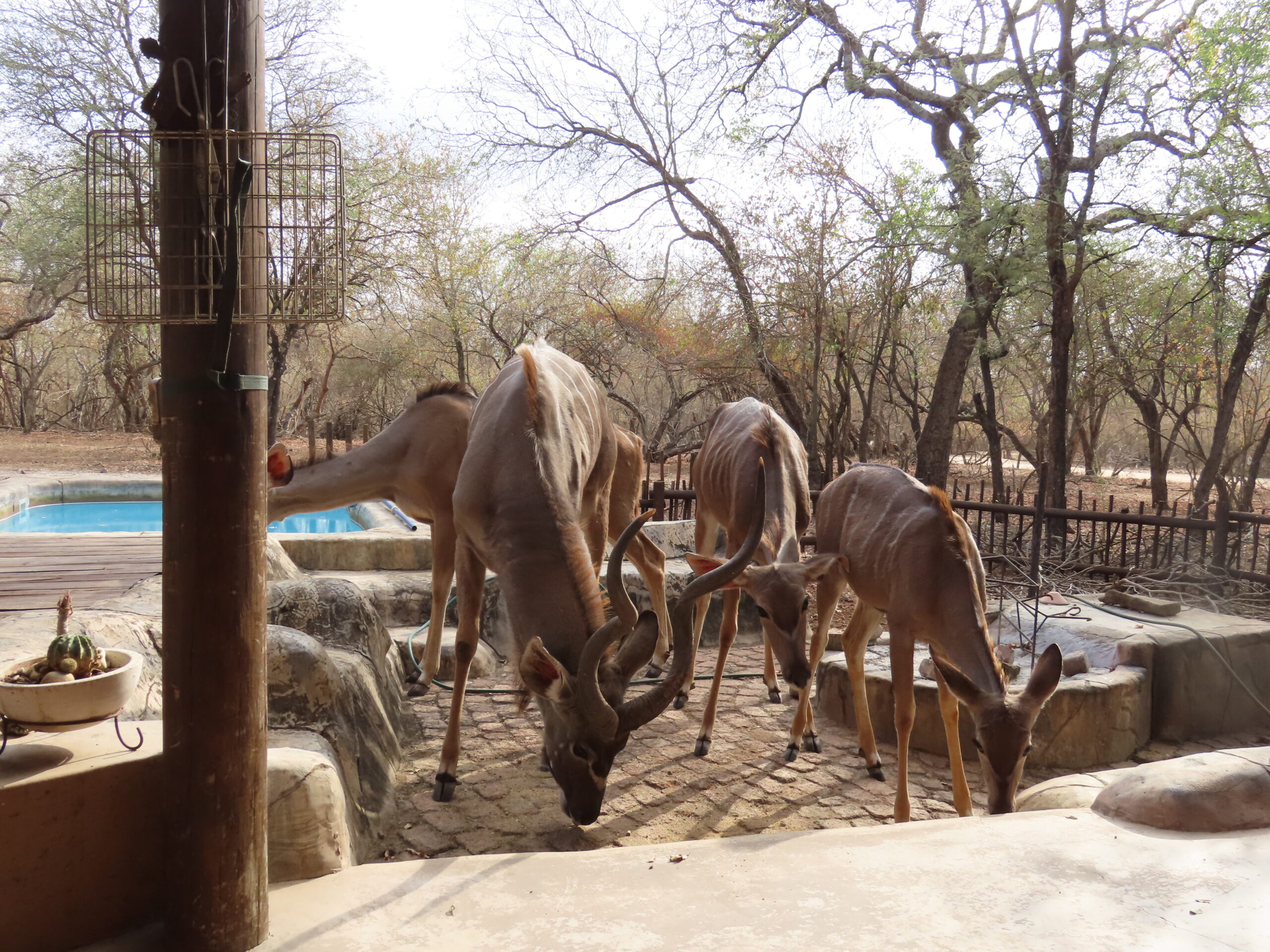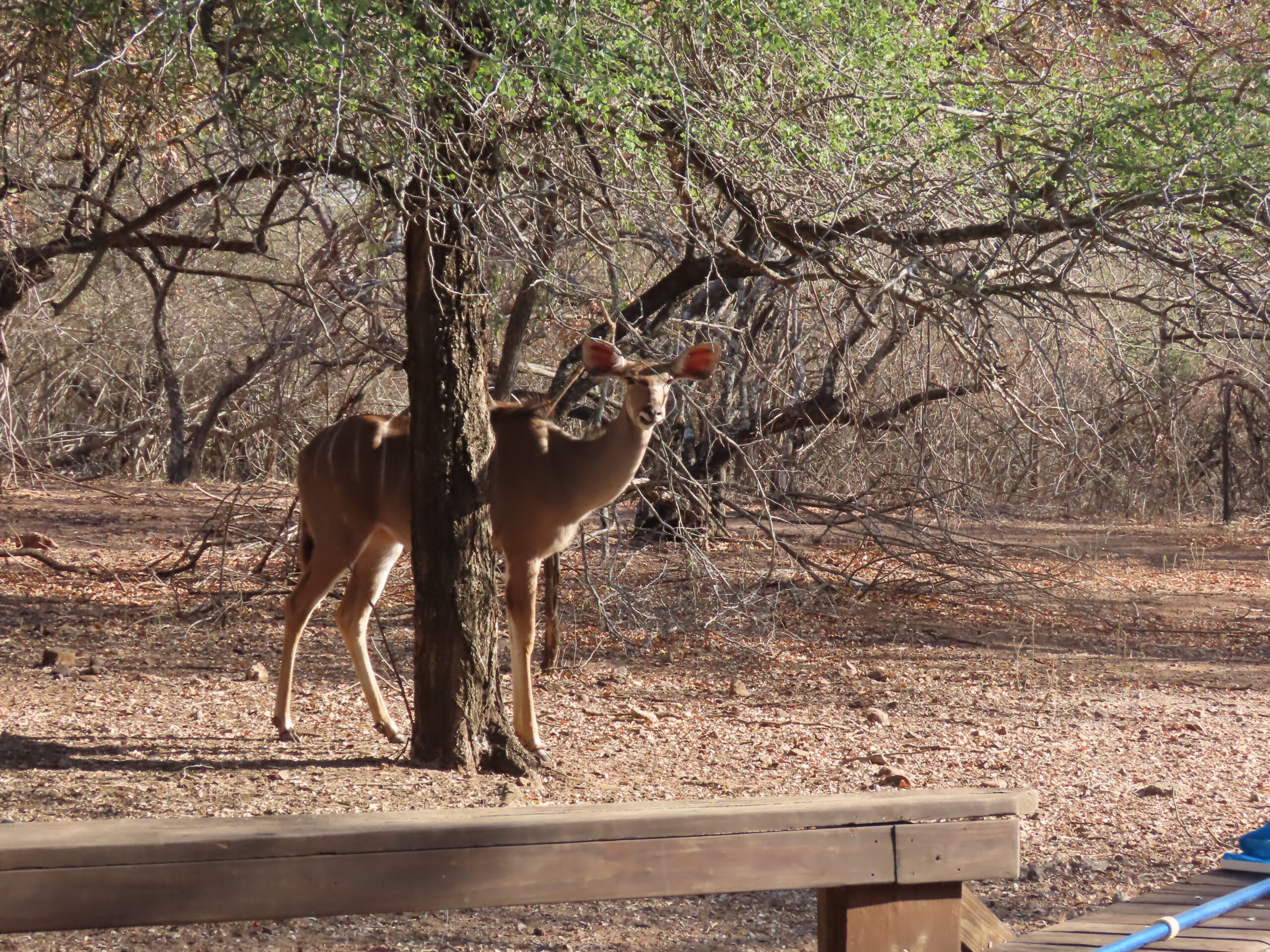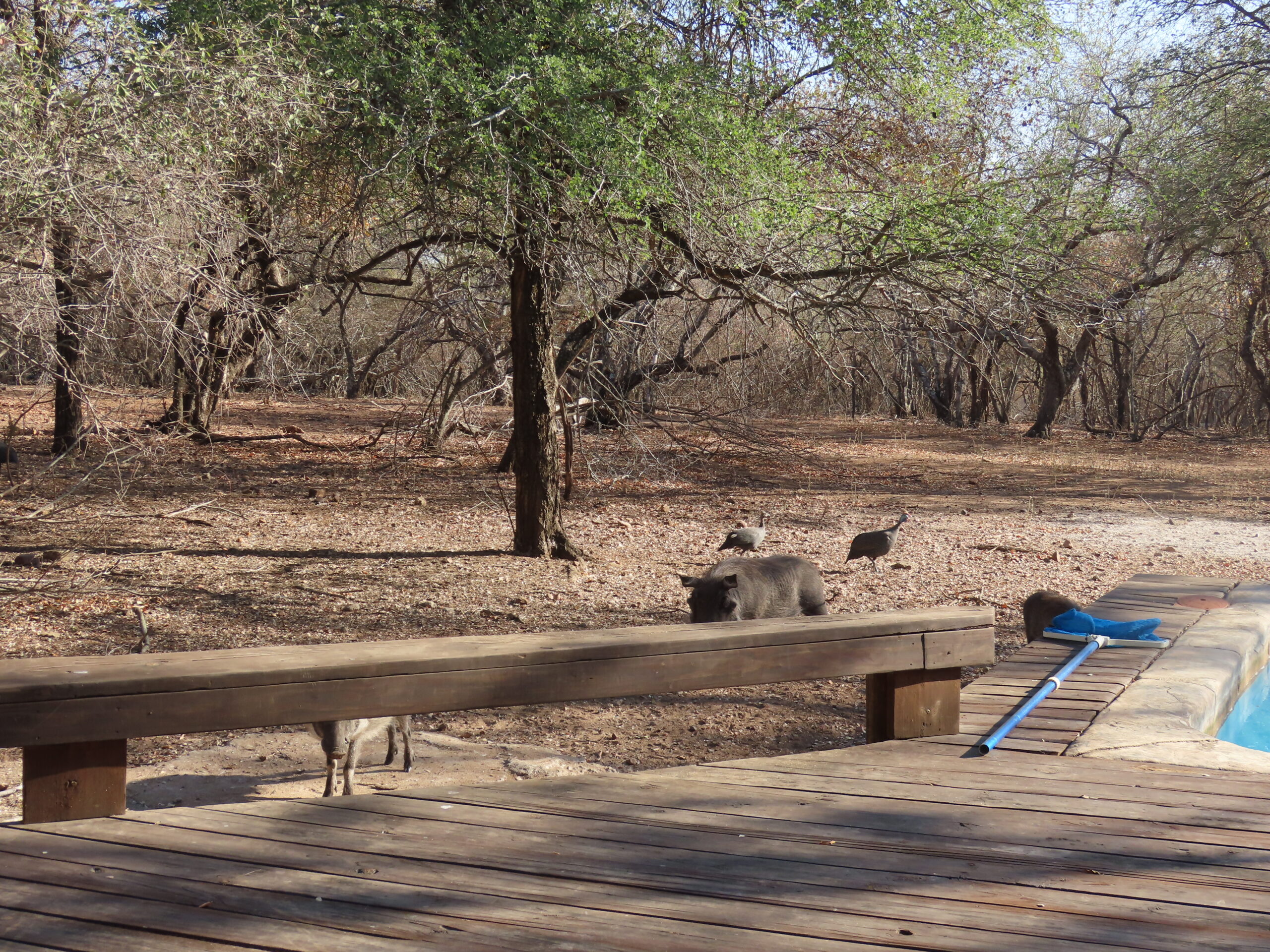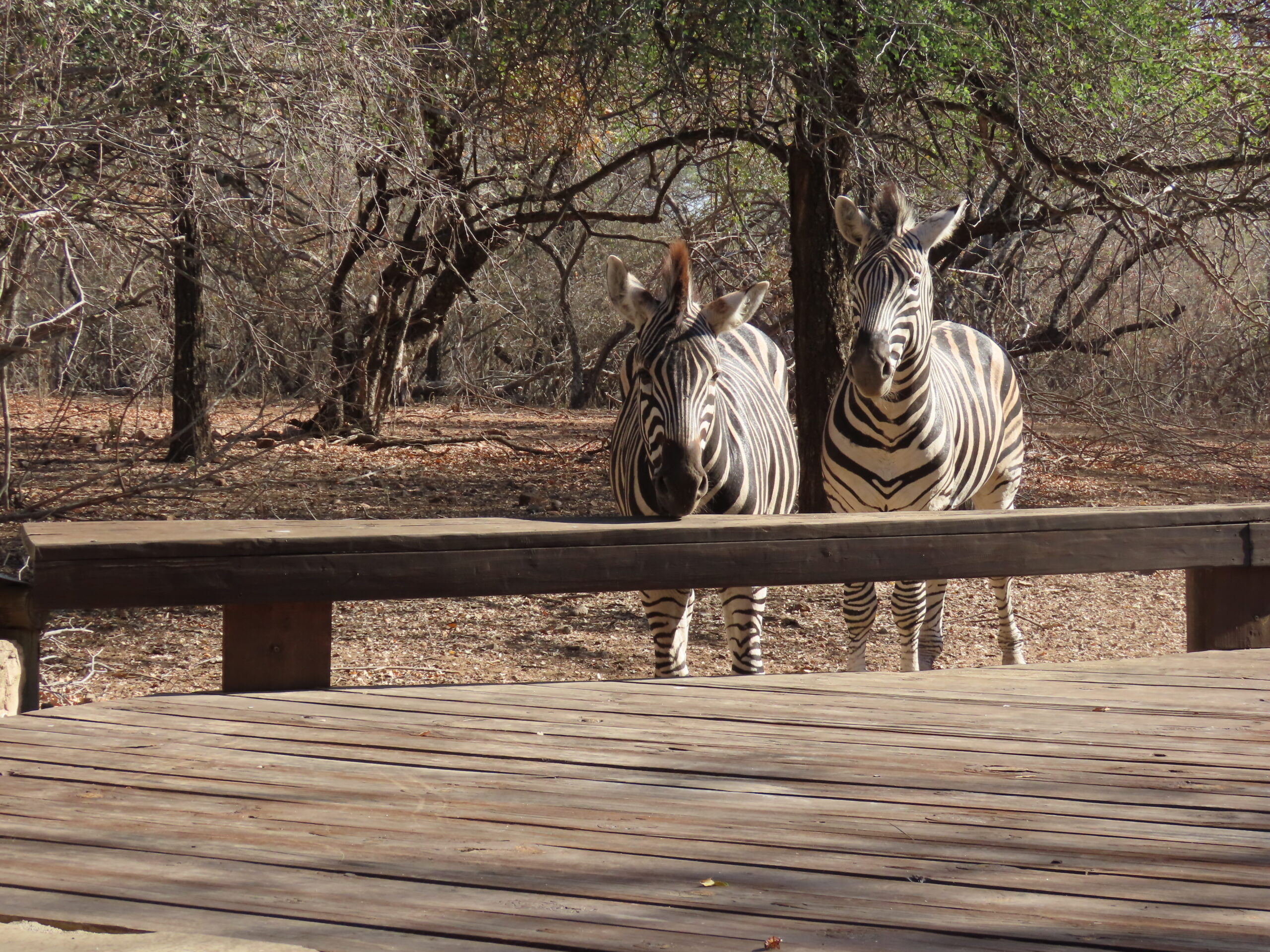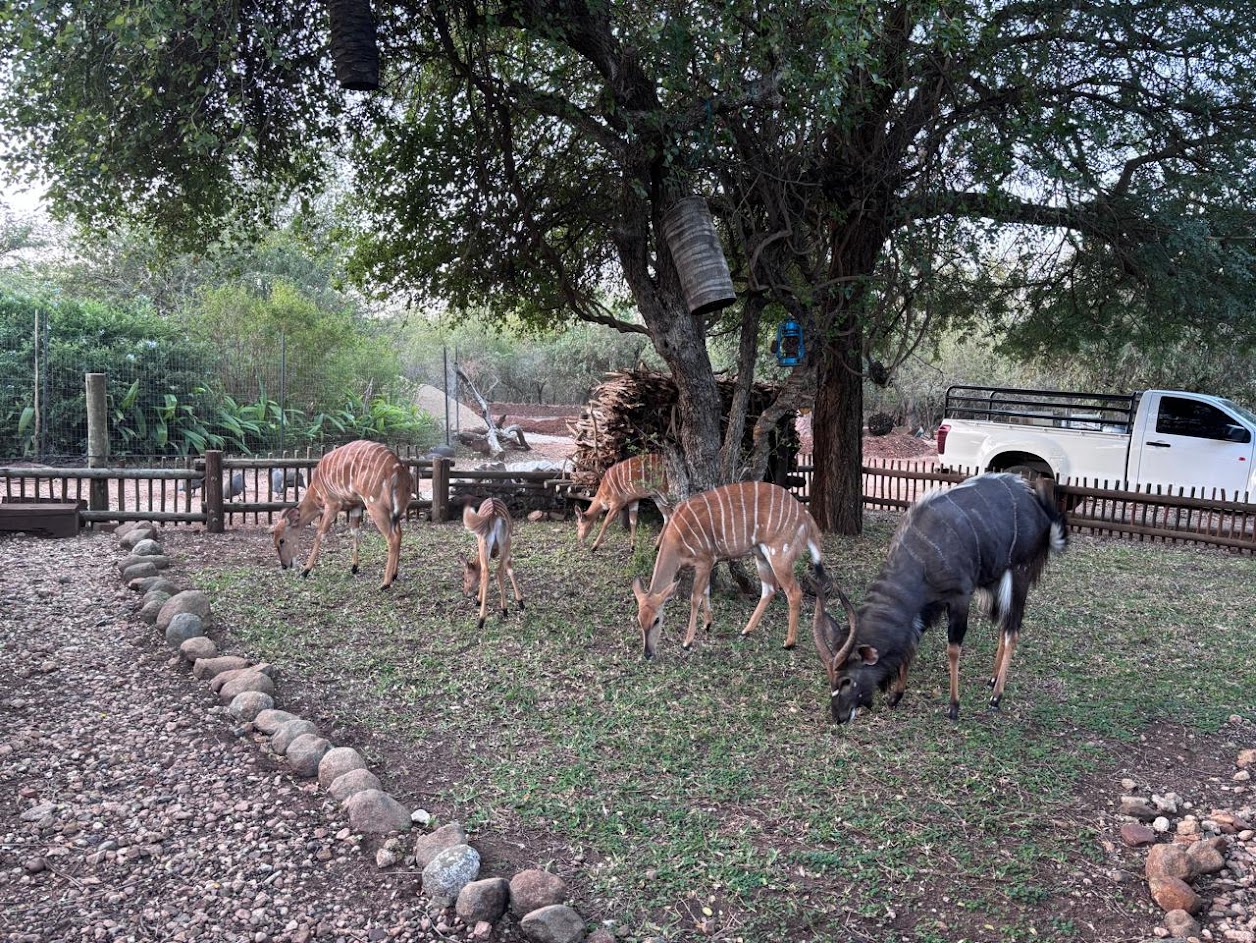
Buying a bale of lucerne was a great idea when Karen and Rich first walked into the house and saw a forkl of kudus standing at the veranda, especially an impressive Big Daddy, the size of which we hadn’t seen lately.
Their journey was long and exhausting, as we’d warned them, but they managed to get four hours of sleep on the second red-eye flight from London to Johannesburg after the unbearable ten-hour layover. Sheer exhaustion helped them to sleep sitting up in the uncomfortable airplane seats.

We’d expected them to need a nap and time to recover before dinner. Still, they were both so enthused about being here and enjoying the wildlife, and our lively conversation, that we all stayed up until midnight, sitting outdoors at the table on the veranda, bundled up in hooded sweatshirts and jackets in the cool 55°F, 13 °C weather.
We’d had a fantastic night commiserating about the events in our lives over the past few years, since we’d last seen each other in The Villages, Florida, in 2023. Of course, Karen and I stayed in close touch regularly, over the almost 13 years since we began traveling the world.
When the driver drove them through the park on the way to our vacation home, they saw many animals, including giraffes, along the road. Then, when they arrived at our house, a bevy of various species graced us with their presence throughout the remainder of the afternoon and the evening.
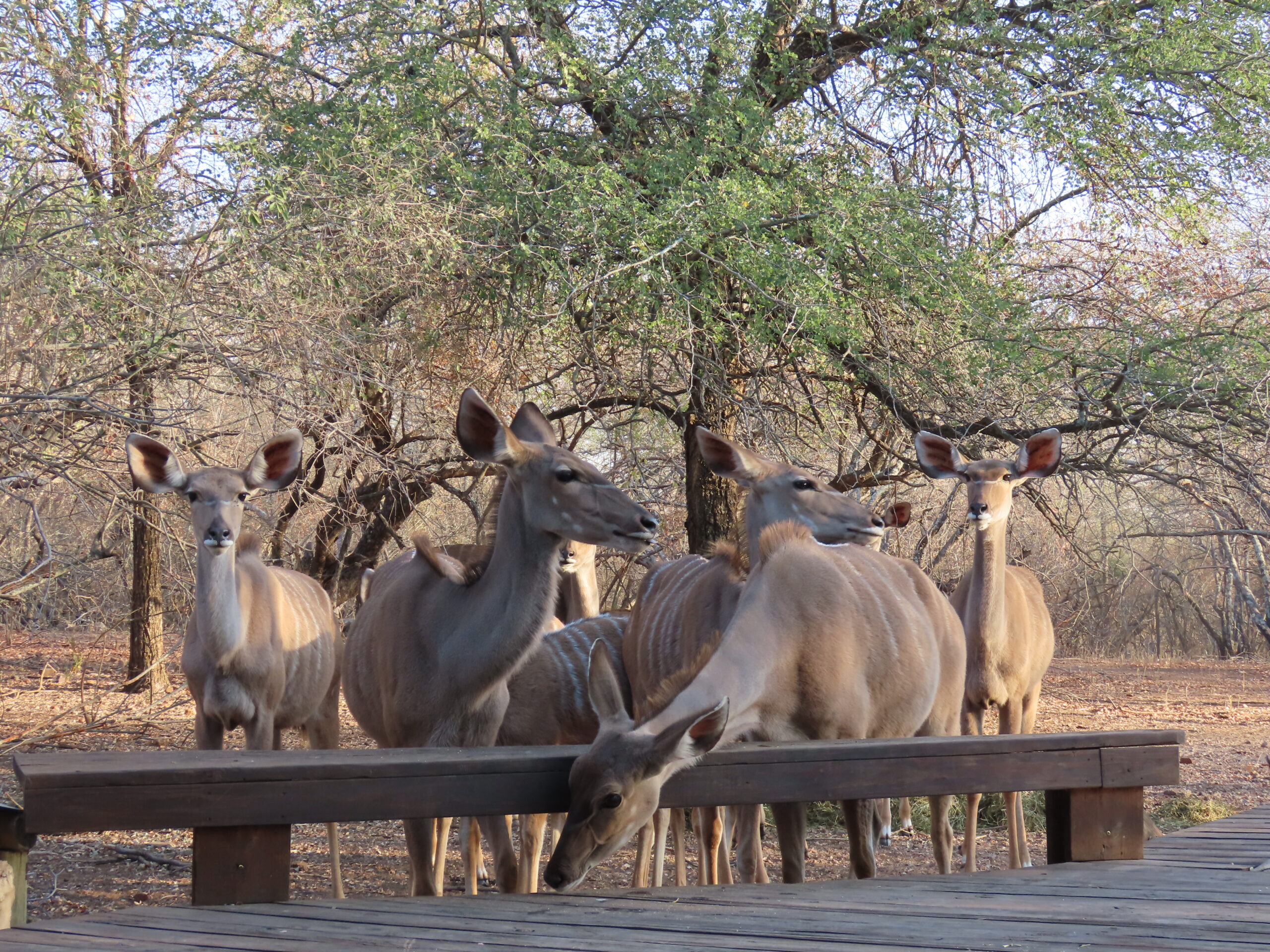
No words can describe how exciting it is to share the wonders of Marloth Park with friends or family, especially those who have never been to Africa before. It’s a never-ending thrill ride of sheer awe and appreciation for the magical world around us, seen face-to-face like never before.
One can certainly see photos and watch videos of wildlife that take one’s breath away. However, nothing compares to seeing the animal’s attentive gaze into our eyes, creating an indescribable connection that is never expected.
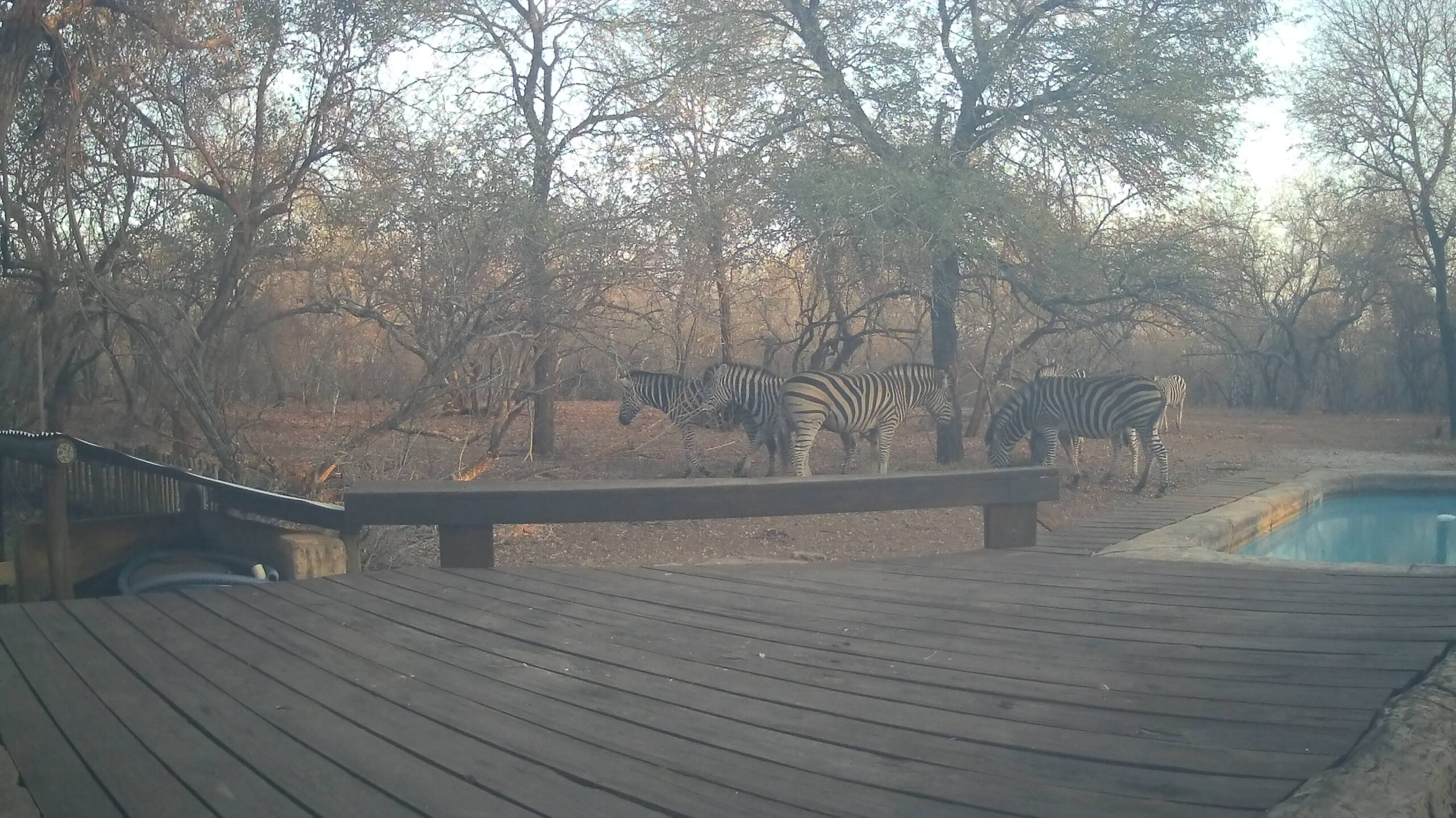
It’s almost 10:00 am, and they are both still sleeping. When they awake, I plan to make mushroom, cheese, and onion omelets for all of us for a late breakfast, after which we will plan our day and evening. Neither of them is interested in embarking on any tours.
We’ll go to the river, visit Kruger National Park, and take a guided night game drive with dinner in the bush. This will allow them to experience many of the local restaurants we enjoy, especially Jabula on Friday and Saturday nights. They’d prefer to do whatever we enjoy doing while living in the bush, perhaps even joining us at Quiz Night on Tuesday.
No doubt, we’ll all have a great time as we share this magical place with friends we’ve loved and enjoyed for many years.
Be well.
Photo from ten years ago today, June 29, 2015:



